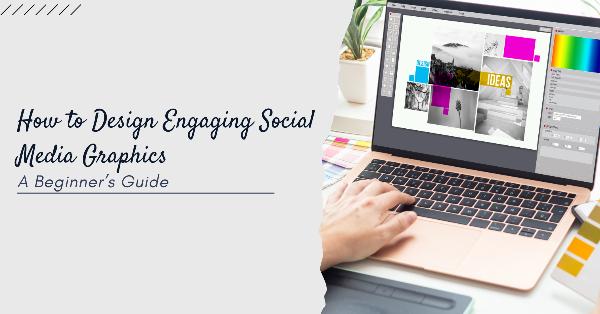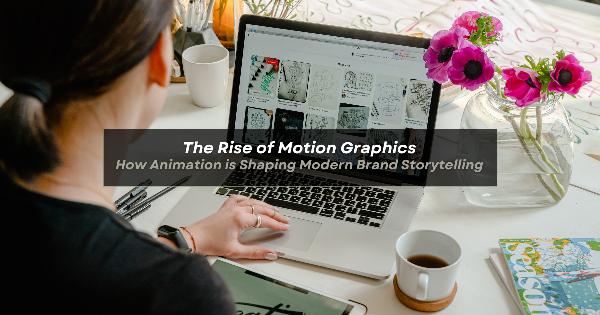 Schema + Rich Snippets – Dominate Search with Visual Results!
Schema + Rich Snippets – Dominate Search with Visual Results!
Types of Animation: From Traditional to Digital and Motion Graphics
Written by Graphic Designer India » Updated on: June 17th, 2025

As far as animation is concerned, it has developed and expanded enormously ever since it began, and that is perfecting the art of making inanimate objects appear to move. Be it an essential hand-drawn cartoon or a magnificently sophisticated digital animation, the industry has matured as time moved on, always innovating itself with new elements and approaches. However, the primary goal of animation has not changed: it still seeks to tell stories, convey feelings, and give audiences experiences that can not always be provided in a live action. Whether for marketing purposes, that of a company looking for ways to promote the business or a person who is fond of animated material in general, this guide is intended to step you through some of the basic kinds of animations and how such style has been evolving up to this day.
1. Traditional Animation: Hand-Drawn Charm
Let us begin with the origins of animation: classical one, which consists of drawing each individual frame by hand. Throughout the better part of the last century this trend was the most influential and gave the world great masterpieces such as, for instance, Snow White and the Seven Dwarfs or The Lion King. What happens here is, every frame or picture drawn, is a little different from the picture before it, creating the effect that movement occurs when these picture frames are played back in quick succession.
Techniques:
- Cel Animation: For decades, this was the most popular technique where artist created the characters on transparent sheets which are called cels, which were placed over a background. Every frame was painted to the last detail to bring scenes to life on a shot-by-shot basis.
- Frame-by-Frame Animation: Each frame is elaborately sketched out by individual artists. Though it is cumbersome, it provides a natural look and feel that is quite difficult to achieve through digital means.
Pros and Cons:
- Pros: While nostalgia can be associated with traditional animation, frame by frame art style also evokes the notion of craftsmanship. Each of the scenes feels distinctively alive.
- Cons: Frame by frame drawing is incredibly labor intensive and costly which is why most of the traditional animation has shifted to the independent art & cult animation classes.
2. 2D Digital Animation: Modern Meets Classic
2D digital animation stays true to its roots, however digitization facilitates the processes and makes the entire thing less expensive. Characters and scenes are designed one by one by animators through using packages like Adobe Animate or Toon Boom which in turn helps in saving time and optimizing various processes.
Techniques:
- Vector-Based Animation: This method employs the use of mathematical equations to outline objects which allow for scaling of the designs without loss of the quality of the designs. Vector animations find multiple applications ranging from explainer videos to cartoons.
- Rigged Character Animation: A ‘’skeleton’’ that can move different portions of the character without redrawing over and over the same frame is created by animators. It’s quick and provides lots of leeway for creativity.
Pros and Cons:
- Pros: Easier to implement across numerous screens and faster than older processes, 2D digital animation encompasses plenty of opportunities. In addition, it retains the hand drawn animation especially the grainy feel that everyone seems to love.
- Cons: Some argue that the lack of the handmade, organic element within drawings makes 2D animation less appealing because it does not possess the warmth of traditional animation.
3. 3D Animation: Bringing Realism to Life
3D animation is the technological explosion to animation’s comparative world. Instead of creating each frame by hand, artists make 3 dimensional models in a space allowing the camera to float around the object and add perspective. For example, we can take toys story or frozen. These movies are a great case of using 3D animation which absorbs a viewer into the 3D world.
Techniques:
- Modeling and Rigging: Animators create 3D models of characters and then cover them with a “rig”, which is a sort of artificial skeleton that makes moving possible. This is an entirely different way of entertaining people.
- Texturing and Lighting: With these processes, additional details are introduced, for instance, texture, the relation of light to volume and the shadows and glints which are produced as a result of this. In tandem with animation, this can make incredible looking images.
Pros and Cons:
- Pros: It is possible to get overly immersive details through 3D animation so as to create completely immersive worlds that the audience can relate to.
- Cons: It is more demanding due to high specification computers and rendering time therefore making it slower than the 2D styles.
4. Motion Graphics: The Power of Text and Shapes
On the other hand, motion graphics are focused on animated text, shapes and other abstract elements which are different from other forms of animations that concentrate more on the stories and characters. Oftentimes used for explainers, commercials, and title sequences, motion graphics is very effective, engaging and useful to convey complex ideas in simple terms.
Uses:
Motion graphics shine in corporate branding, social media ads, and promotional videos where communicating messages visually is key. With a few bold colors, strong typography, and well-timed animations, motion graphics grab attention and hold it.
Examples:
We all can think of logo animations or Kinetic logos or any text which is moving in YouTube videos and companies often exaggerate their animation during advertising their product or propagating their brand.
Pros and Cons:
- Pros: Ideal for fast-paced branding and narratives, Motion graphics are less complicated in making than character-bias animations and are effective in digital marketing.
- Cons: With respect to the fact that they do not use story-telling characters, they seem to lack emotional weight and engagement for content that is plot-oriented.
5. Stop-Motion Animation: A Tactile Approach
Stop Motion Animation is a popular animation technique that involves moving physical objects and photographing them. Considered ‘home-made’ traditions, stop motion is able to portray whacky and organic feels that cannot be created in other types of animation, which is where Stop Motion animation reigns supreme. We are able to thank this style of animation for films such as A Nightmare Before Christmas or Wallace and Gromit’s Feature.
Types:
- Claymation: Stop Motion Animation involves the use of sculpted figures to create the illusion of movement. With an extensive range of movement, Clay Animation is rare in the animation field.
- Puppet and Object Animation: This uses models, miniatures, props and objects to convey the story visually.
Pros and Cons:
- Pros: Stop Motion, on the other hand, is raw. Alone its technique commands versatility. It is sculptured, molded, and expressive.
- Cons: Step by step production using real life materials, Stop motion is limited to time.
6. Experimental and Hybrid Animation: Breaking the Mold
Experimental animation bends the rules. It blends various animation techniques to create something new. It is the type of animation that is seen in music videos, advertising, and short films—a fusion of media and styles for a fresh perspective on animation. The recent Spider-Man: Into the Spider-Verse is an excellent example of such work, where 2D and 3D elements combine seamlessly to create an entirely comic book-like experience.
Examples:
- Mixed Media: Artists might merge 2D drawings with 3D modeling or incorporate live action.
- Digital and Physical Combinations: Experimenting with styles and technology, these hybrids give animators endless creative freedom.
Benefits:
It is something that should be all about innovation, pushing boundaries and creating something distinct. It's visually exciting, constantly surprising viewers with creative visuals.
Choosing the Right Animation Style for Your Project

So, which animation style is best for you? Well, you can have that answer just by letting us first know your project goals, audience, and budget.
- Traditional or 2D Digital: Ideal for brands wanting a nostalgic, classic feel or projects with a budget.
- 3D Animation: Ideal for immersive storytelling and high-quality visuals, though it’s more resource-intensive.
- Motion Graphics: Perfect for companies wanting to convey information quickly, like for ads or explainer videos.
- Stop-Motion: If you’re aiming for a unique, handmade look that stands out, stop-motion can make a strong impression.
- Experimental: It caters to brands or projects that place creativity at the very top of their priorities and continue to push the limits where visuals are concerned. As far as the rewritten text is concerned, it should be
Conclusion
Animation is an incredibly flexible expressive technique that is constantly changing, and diverse styles are its incarnations. It provides everything: from the serene beauty of classic animation to the ultra-modern world of 3D and hybrid styles. In turn, they can be of interest to entrepreneurs who care about applying video spots in their marketing efforts to increase engagement, or to directors, not to mention simply fanciers of animations who can recognize real labor here—and perhaps even get an idea for their following creative project.
Every animation style would propose a different way of storytelling, seizing the audience, and breathing life into ideas. Hence, the next time you watch an animated video or commercial, consider the art and creativity that went into it. If you think about it, animation is a medium that can pretty much convey anything you can imagine.
Note: IndiBlogHub features both user-submitted and editorial content. We do not verify third-party contributions. Read our Disclaimer and Privacy Policyfor details.
Copyright © 2019-2025 IndiBlogHub.com. All rights reserved. Hosted on DigitalOcean for fast, reliable performance.
















